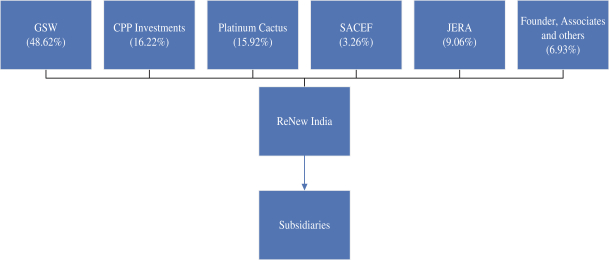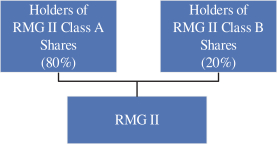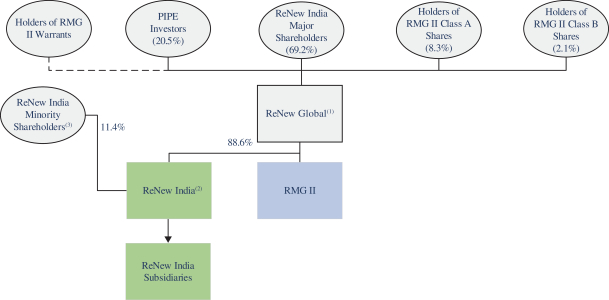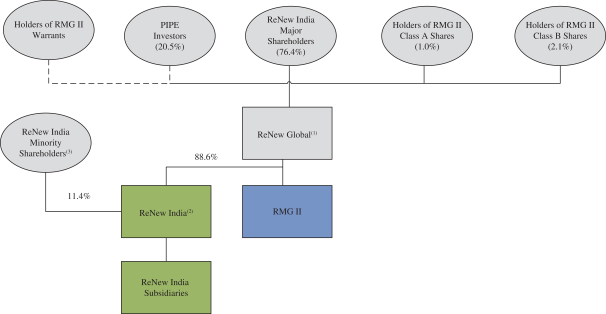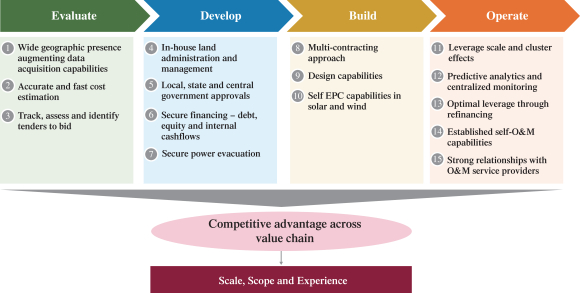On December 28, 2020, RMG II’s Board met via teleconference. Mr. Mancini, Mr. Carpenter, Mr. Kassin, and Craig Broderick, W. Grant Gregory, Thaddeus Miller, and Catherine D. Rice, being all the directors of RMG II, participated in the meeting. Christina Alfandary, Jeffrey S. Bornstein, Banks Bourne, Steven P. Buffone, Jane P. Chwick, Randel A. Falco, Edward Forst, Steven J. Gilbert, Jeff Laborsky, Trae Stephens, J. Eric Smith and Eddy Zervigon, being all of the members of the Advisory Board of RMG II, also participated in the meeting. At this meeting, Mr. Mancini gave a background presentation on ReNew India, and the Board discussed the prospects of a potential business combination with RMG II. On the same day, BofA Securities shared views on technical consultants for a potential due diligence engagement with RMG II.
On December 29, 2020, RMG II sent to representatives of ReNew India an initial draft of the LOI, setting forth the proposed terms of a potential Business Combination, including governance, exclusivity, process and timeline, but without any proposed valuation range or comparable transactions analysis.
On January 5, 2021, representatives of KPMG, including Bhavik Damodar, Partner, and Jamil Sangoi, Director, and the technical consulting team at TUV Rheinlander India Pvt. Ltd., or “TUV,” held kickoff calls with RMG II and BofA Securities to discuss the scope of phase one of their due diligence engagement.
On January 6, 2021, RMG II provided representatives of ReNew India with updated discussion materials containing range of pro forma valuations and comparable transactions analysis.
On January 7, 2021, representatives of RMG II, ReNew India, GSW and BofA Securities met to discuss the strategy for the PIPE Investment process. In that meeting the parties agreed to bifurcate the PIPE process into small investor group meetings to gauge success of the PIPE Investment.
On January 8, 2021, representatives of RMG II, ReNew India, BofA Securities and Skadden held a teleconference to kick off structuring and process discussions.
On January 10, 2021, RMG II submitted a draft of the LOI to representatives of ReNew India with a preliminary valuation analysis and a summary of the PIPE Investment strategy.
On January 11, 2021, RMG II and BofA Securities entered into an engagement letter relating to the services rendered by BofA Securities as financial advisor to RMG II in connection with the Transactions.
On January 12, 2021, representatives of RMG II met with representatives of ReNew India and GSW to discuss generally the terms of the LOI.
From mid-January and up to the date of signing of the Business Combination Agreement, RMG II, with the assistance of TUV, KPMG India Services LLP, or “KPMG,” Skadden and Khaitan & Co LLP, or “Khaitan,” conducted technical, financial, tax, legal and insurance due diligence on ReNew India, including with respect to its projects, operations, and material contracts and financing arrangements. Over that period of time, representatives of RMG II and ReNew India, and their respective technical, financial, tax and legal advisors, continued to have general discussions about ReNew India’s business and background information to facilitate due diligence.
On January 13, 2021, representatives of RMG II, GSW and Cleary Gottlieb Steen & Hamilton LLP, or “Cleary,” counsel to GSW, met to discuss the terms of the ReNew Global non-voting shares structure for GSW. On the same day, RMG II and TUV entered into an engagement letter relating to the services rendered by TUV in connection with phase 1 of their technical due diligence.
On January 16, 2021, Mr. Sinha provided comments to the draft LOI, including on the exclusivity and board composition provisions. On the same day, representatives of RMG II, GSW, ReNew India, and their respective legal and financial advisors, met to discuss the content of and approach to the PIPE Investment marketing materials.
145
